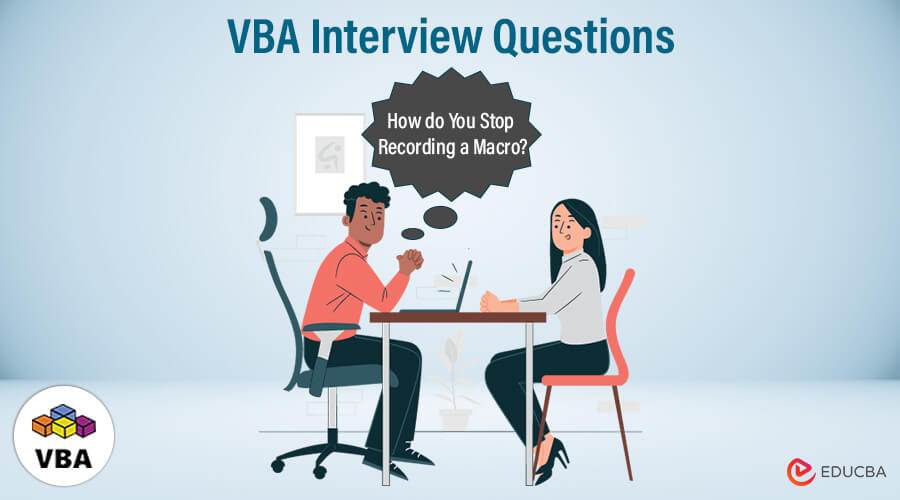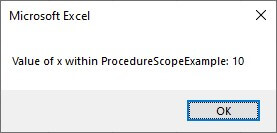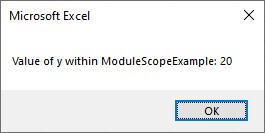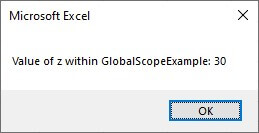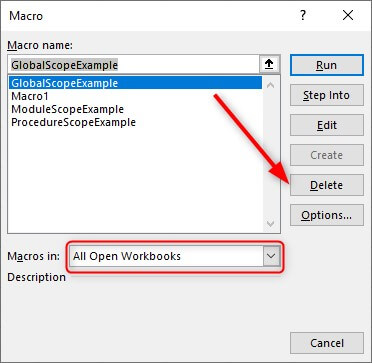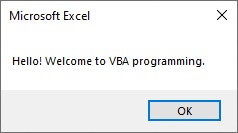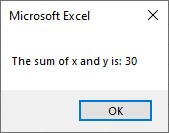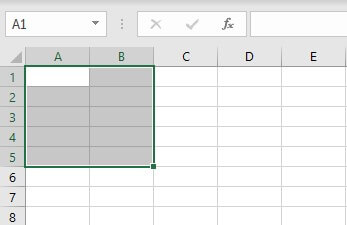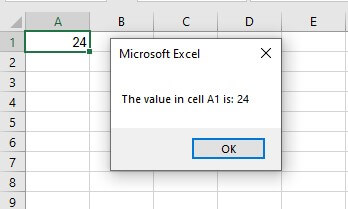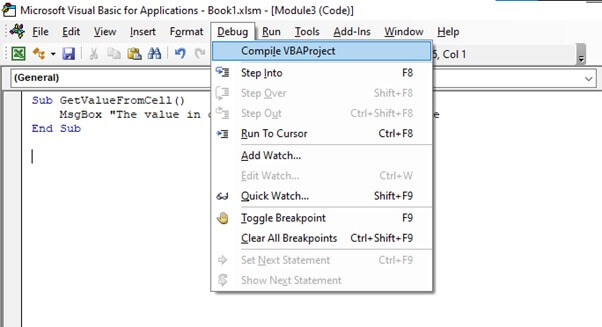Introduction to VBA
Most businesses operate around data, analyze it, and make it meaningful to make informed decisions. However, analyzing large amounts of data and performing specific operations regularly may impact its quality. Thus, businesses use VBA (Visual Basic for Applications) to automate the process. If you are appearing for interviews requiring VBA coding, you must be confident in answering basic and advanced questions.
To help you prepare for your upcoming VBA interview, we have summed up the most frequently asked VBA questions from basic to advanced.
Key Takeaways
- VBA Stands for Visual Basic for Application
- It offers a robust toolkit for creating custom functions, macros, and forms.
- You can integrate it with Office apps for data manipulation and automation.
- VBA simplifies user interaction by allowing the creation of user-friendly interfaces.
- Its broad range of functions and external library support make complex tasks easier to manage.
Common VBA Interview Questions
1. What is VBA (Visual Basic for Applications)?
Answer: VBA is an objective-oriented programming language developed by Microsoft to automate tasks and extend the functionality of Microsoft Office applications. Users can employ it to follow a specific process when dealing with large data sets.
The keyboard shortcut to access the VBA editor is ‘Alt + F11’
2. Explain macros. What are its benefits?
Answer: Macro in VBA stores recorded the Visual Basic module code instructions. These macros reside in modules. To insert a module,
- Go to the VBA editor, click insert -> module
You can replay these macros to automate common repetitive tasks using Excel or other Office applications, saving time and effort.
3. Define modules. What are the different types of modules?
Answer: In Visual Basic for Applications (VBA), modules store and organize code or macros. They have extensions like “.bas” for standard modules and “.cls” for class modules. There are three main types of modules.
- Standard Modules: Store VBA code for widespread use in projects.
- Class Modules: Define custom objects with properties and methods.
- UserForms: Create visual interfaces for user interaction in VBA projects.
4. Define variables and the scope of variables in VBA.
Answer:
In VBA, variables store and manipulate data, and their scope dictates their accessibility.
- Procedure-level scope: Programmers declare these variables within a procedure. You can access them only through that procedure.
- Module-level scope: Programmers declare these variables at the module level, and you can access them from any procedure within that module.
- Global scope: declared outside of any procedure or module you can access from anywhere in the project.
For example-
Code
Sub ProcedureScopeExample()
Dim x As Integer ' Procedure-level scope variable
x = 10
MsgBox "Value of x within ProcedureScopeExample: " & x
End SubOutput:
Code
Sub ModuleScopeExample()
Static y As Integer ' Module-level scope variable
y = 20
MsgBox "Value of y within ModuleScopeExample: " & y
End SubOutput
Code
Public z As Integer ‘ Global scope variable
Sub GlobalScopeExample()
z = 30
MsgBox "Value of z within GlobalScopeExample: " & z
End SubOutput:
5. Can macros run automatically when opening an Excel worksheet?
Answer:
You can automatically run macros when opening a worksheet in Excel VBA using the Workbook_Open() event.
- Press Alt + F11 to open VBE.
- Double-click on the workbook where you want to run the macro automatically.
- In the code window for the workbook, enter the code for the Workbook_Open() event.
Private Sub Workbook_Open()
' Call the macro you want to run automatically
Macro_Name
End Sub- Replace Macro_Name with the actual macro name that you want to run automatically.
- Save the workbook with the “.xlsm” extension and as a macro-enabled workbook.
- It will run the macro automatically whenever you open the workbook.
6. What are Objects, Methods, Properties, and Events?
Answer:
These are fundamental concepts of VBA.
- Objects: Objects are program entities such as worksheets, cells, or ranges. They can contain data and code to manipulate that data.
- Methods: Actions or behaviors that an object can perform. You can manipulate objects or perform operations on them.
- Properties: Properties denote the attributes of an object that define and provide information about the object’s features.
- Events: Events are Actions that happen in response to user triggers. They allow your program to respond dynamically to user input or system events.
7. How do you stop recording a macro?
Answer:
To stop recording a macro in Excel.
- You can click “Stop Recording” in the “Developer” tab. If the developer’s tab is not available, go to “File” > “Options” > “Customize Ribbon” and check “Developer.”
Or
- The shortcut “Ctrl + Shift + R” stops the recording macros.
8. How to delete a macro?
Answer:
To delete a macro from a workbook in Excel.
- Open your Excel workbook and go to the “Developer” tab.
- Click “Macros” to view existing macros.
- Select the macro_name from the list to delete
- Click “Delete”.
- Click “OK” in the confirmation dialog box to confirm the deletion.
9. Tips to debug a VBA code.
Answer:
Below are some tips
- Using VBE Tools: set breakpoints, step through code, and check variable values in the Locals window.
- Debugging with Debug.Print: Use Debug. Print to print variable values and other information to the Immediate window.
- Handling Errors with Err Object: capture and display error messages using the VBA Err object to pinpoint error lines and types.
- Monitoring Variables with Watch Window: Monitor specific variable values using the VBA Watch window to spot unexpected behavior.
10. How do you optimize VBA code?
Answer:
To optimize VBA code
- Optimizing VBA code involves making it more efficient and faster to execute.
- This optimization includes simplifying the logic and structure of the code.
- Minimize unnecessary looping to improve performance, especially when dealing with large datasets.
- Leveraging Excel’s built-in functions whenever possible helps in optimizing VBA code.
- Disabling screen updating and calculation during macro execution can significantly improve performance.
- Utilizing arrays for data manipulation can be more efficient than working with individual cells.
- Minimize clipboard usage to reduce resource-intensive operations such as copying and pasting.
- Avoiding volatile functions that recalculate frequently, such as INDIRECT or OFFSET, helps improve performance.
- Keeping the workbook structure simple and avoiding excessive linking between sheets can improve macro execution speed.
11. How do you stop the VBA script when it goes into the infinite loop?
Answer:
- Press the Esc Key to go to Debug Mode
- Press Ctrl+ Pause Break Key to Skip from the Infinite execution.
Advanced VBA Topics
1. Define procedures.
Answer:
A single or multiple line of code is called a procedure.
Code
Sub GreetUser()
' This procedure greets the user with a message box
MsgBox "Hello! Welcome to VBA programming."
End SubOutput:
In the above example- GreetUser is the name of the procedure.
2. What is Open Explicit?
Answer:
In VBA, ‘Option Explicit’ enforces variable declaration. You have to explicitly declare all variables before using them. It is a good coding practice, promoting code clarity and reliability by preventing typographical errors.
For example-
Code
Option Explicit
Sub Example()
Dim x As Integer
Dim y As Integer
x = 10
y = 20
MsgBox "The sum of x and y is: " & (x + y)
End SubOutput:
3. How do you select a range of cells using a macro?
Answer:
You can use the Range object, and Users can utilize the “Select” method to choose a range of cells in VBA.
For example-
Code:
Sub SelectRange()
' Selects a range of cells
Range("A1:B5").Select
End SubOutput:
In this example-
- Sub is the keyword used to define a subroutine or macro in VBA.
- SelectRange is the name of the macro.
- Range(“A1:B5”) specifies the range of cells to be selected. In this case, cells from A1 to B5.
- .Select is the method used to select the specified range of cells.
4. How do you get a value from a cell using a macro?
Answer:
To get a value from a cell using a VBA macro in Excel
- Open the VBA editor (Alt + F11).
- Insert a new module (Insert > Module).
- Use the following code:
- Close the VBA editor.
- Run the macro (Alt + F8) and select “GetValueFromCell”.
For example-
Code:
Sub GetValueFromCell()
MsgBox "The value in cell A1 is: " & Range("A1").Value
End SubOutput:
5. What is the difference between a Public and a Private Sub in VBA?
Answer:
| Feature | Public Sub | Private Sub |
| Scope | Public Subs are accessible from anywhere in the project | Private Subs are only accessible within the declared module |
| Declaration | Declares with the keyword “Public” before the Subname | Declares with the keyword “Private” before the Sub name |
| Usage | Used for making a Sub available to multiple modules | Used for limiting the scope of a Sub to a single module |
| Accessibility | Can be called from anywhere in the project | Can only be called from within the module it is declared in |
| User-defined | Can create user-defined functions | Cannot create user-defined functions |
| Event handlers | Can create event handlers | Cannot create event handlers |
| Custom classes | Can create custom classes | Cannot create custom classes |
6. How do you debug a code in VBA?
Answer:
There are two ways to debug the code.
- Choose the compile VBA project option.
- Another way is to run each line of code to check the error. To do this, either select the “step into” option shown under the “compile VBA project” option or press F8.
7. How do you use VBA to interact with the database?
Answer:
- ADO Library: This library allows you to establish database connections, execute SQL commands (queries, inserts, updates, deletes), retrieve data from database tables, and handle errors during database operations.
- Connection Object: you can connect to the database by providing a connection string with details like server name and credentials.
- Command Object: Developers use the command object to run stored procedures and SQL queries after establishing a connection.
- Recordset Object: Retrieve query results using the Recordset object that fetches the data returned by executed queries.
- DAO Library: to manage database objects such as tables and queries.
8. How do you create custom Excel functions in VBA?
Answer:
Below are the simple steps-
- Open Excel.
- Enable the Developer tab.
- Access the VBA Editor.
- Insert a module.
- Write function code using the Function keyword.
- Save the workbook as .xlsm.
- Utilize the custom function in Excel by entering its name and parameters into a cell.
Code:
Function AddNumbers(num1 As Double, num2 As Double) As Double
' Function to add two numbers and return the result
AddNumbers = num1 + num2
End FunctionOutput:
9. Explain Type Library and what is its purpose.
Answer:
A Type Library in VBA contains information about objects, properties, methods, and constants in an external component. Its purpose is to help VBA work efficiently with these objects. When you reference a Type Library, you access its predefined types and members, enabling you to interact with external components directly from your VBA code. It allows for easier code completion and error checking.
10. What methods are available for passing arguments to VBA functions?
Answer:
In VBA, users can pass arguments in two ways.:
- ByVal: The procedure gets the actual address assigned to the argument. Changes made to the argument inside the procedure persist when the procedure ends. ByRef is the default in VBA.
- ByRef: The procedure receives the actual address assigned to the argument. Changes made to the argument inside the procedure persist when the procedure ends. ByRef is the default in VBA.
Tips for Excelling in VBA Interviews
Below are some essential tips you must follow.
- Understand VBA concepts like variables, loops, and conditional statements.
- Practice writing VBA code regularly to improve your skills.
- Know Excel well and how VBA can automate tasks.
- Show your problem-solving skills by solving coding challenges.
- Communicate clearly during the interview about your understanding of VBA and how you approach problem-solving.
- Explore VBA libraries like ADO for databases, Outlook for emails, and Word for documents.
- Keep up with the latest trends in VBA and Excel by reading blogs, joining forums, and participating in online communities.
Conclusion
VBA is an efficient tool for developers using Microsoft applications to automate repetitive tasks. Whether experienced or beginner, anyone can quickly learn to use VBA code due to its simple syntax and wide community support. If you are exploring a career in VBA, you must go through this quick interview questions and answers guide to prepare with simple, easy-to-understand examples.
